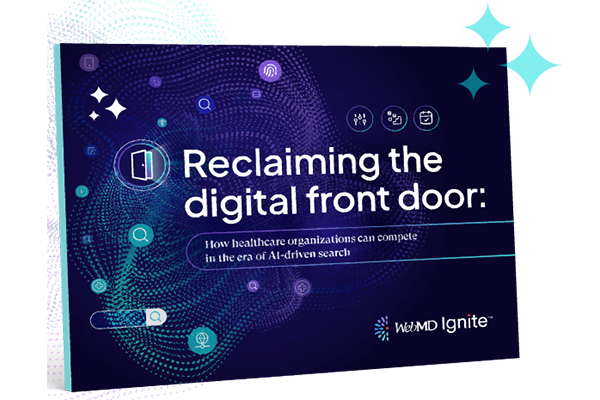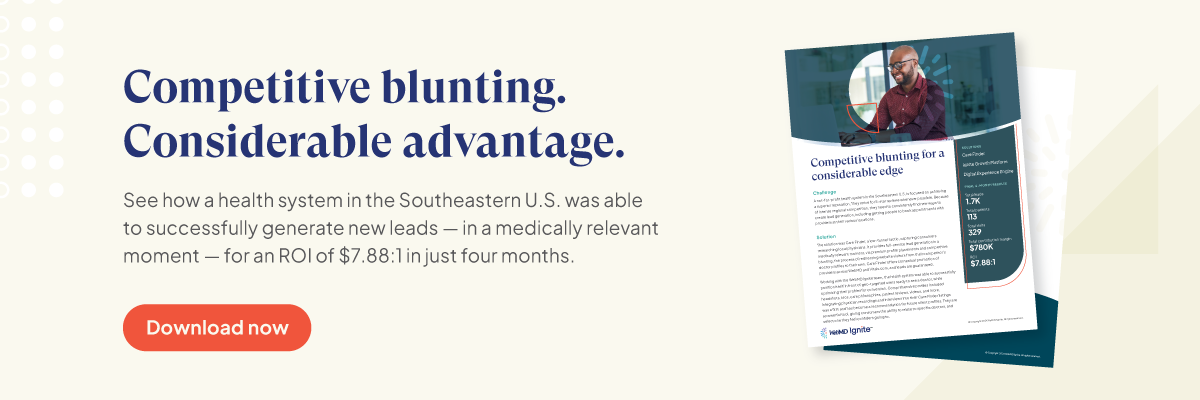How to support the digital health journey across five key phases

Categories: health plans, health systems, healthcare organizations, associations
Positive experiences don’t occur by chance — they require plenty of planning and supporting technologies, especially in a digitally-dominant world. To better understand how health consumers discover your organization, what drives them to make an appointment, and why they choose to stay, start by looking at the digital journey.
The digital-enabled health journey seamlessly connects to your digital front door, or any major virtual touchpoint where consumers may engage with your organization. This can occur at any phase. In addition to your portal and website, it may include social media ads, automated contact center communications, self-scheduling tools, and similar services.
By mapping the patient journey through digital channels, you can streamline workflows and create positive experiences. Consider these five phases:
1. Awareness, when the consumer realizes they (or their loved one) require care.
To prepare for it, it requires a clear strategy of how to identify consumers with a high likelihood of need for your service. This may require an investment in the skills and technologies needed to capture important market and consumer-level data. But when designed and utilized correctly, you’ll be able to access insights that will bolster your acquisition strategies. For example, utilizing clinical propensity models to identify consumers with a high likelihood of need for orthopedic services, and serving them a knee health risk assessment on Facebook.
2. Search, when the consumer begins looking for treatment options.
Using similar data and tactics mentioned above, you can find cues that dictate a consumer may soon need care. This allows you to position your marketing efforts where your target audience is searching. In this scenario, a consumer visits WebMD.com to search for tips on how to relieve knee pain and is served your orthopedic providers’ profiles on related content pages.
3. Initial contact, when the consumer has chosen a provider.
Keep in mind they still have an opportunity to switch to a competitor during this phase. Keeping them engaged is essential, so make sure it’s easy to make an appointment and continue to provide relevant, helpful outreach. An example of this is a patient that engages with a call-to-action (CTA) on your website to schedule a consultation with one of your orthopedic specialists. Once scheduled, a confirmation email is sent with tips and “questions to ask your doctor.” In the days leading up to the appointment, a reminder alert with a video link is sent about “what to expect.”
4. Treatment, when acute, adjacent, and aftercare happens.
The goal is to make care coordination straightforward and ensure quality care outcomes. In this case, a patient might be assessed and subsequently recommended to undergo physical therapy. Once initiated, links to interactive educational content are provided to help them integrate necessary exercises and corresponding recommendations into their day-to-day life.
5. Post-visit, after – or in between – episodes of care.
Perhaps one of the most crucial (yet often forgotten) phases of the health journey, this is when you ensure that patients and consumers stay aware of your organization and providers, thereby creating a seamless loop in the care journey. For example, leveraging marketing automation to maintain constant contact with relevant and engaging healthcare marketing outreach, based on individual preferences.
Final thought
Technology isn’t a panacea overcoming all obstacles within the healthcare industry. But when designed and utilized correctly, healthcare-specific technology enables you to better understand your audience, encourages them to choose you over a competitor, and gives them a reason to come back. And, with the technology and knowledge required to supplement your efforts, your strategic coordination will take you the rest of the way.





